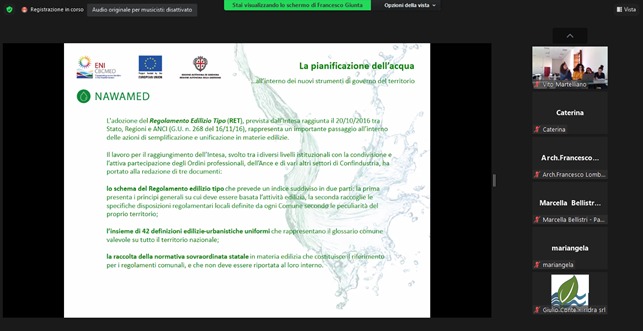NAWAMED: the value of solutions towards sustainable water management at household level
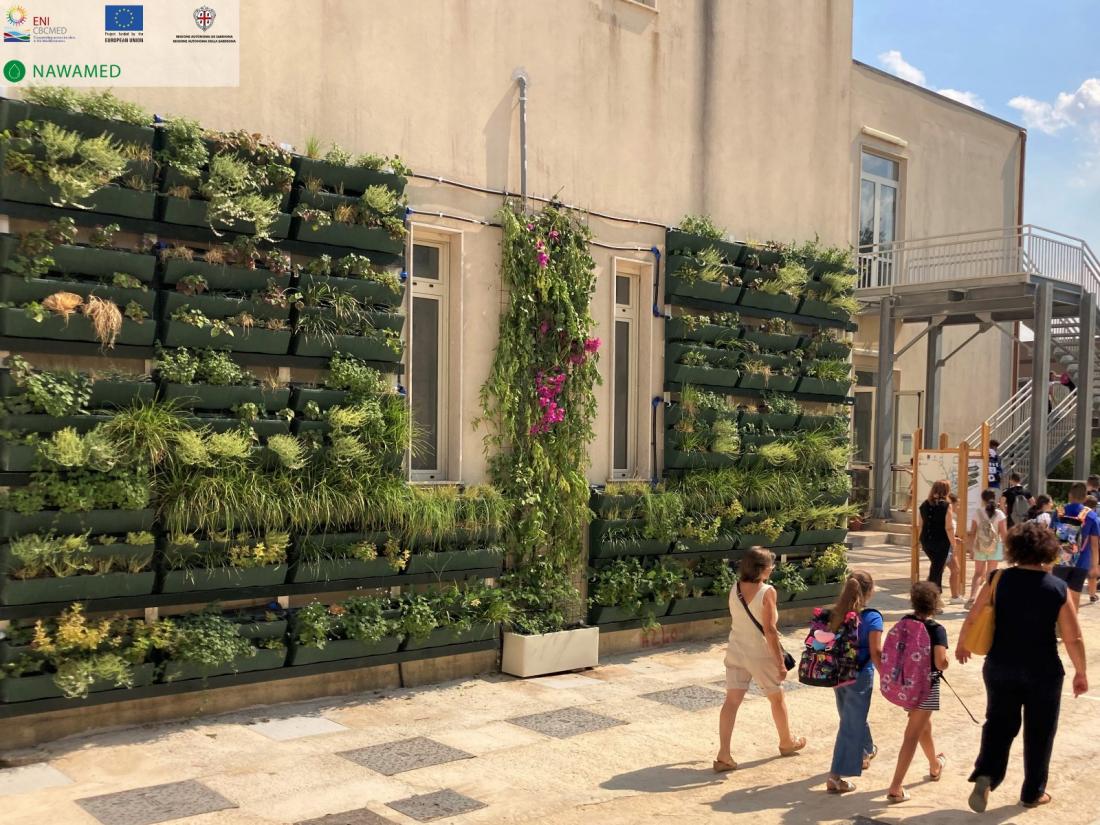
On 16 December 2022, the third of the four technical meetings of the NAWAMED project called Water Table was held, organised by SVI.MED. - Euro-Mediterranean Centre for Sustainable Development (project partner), in synergy with Iridra, both project partners.
The meeting follows the debate on existing and innovative solutions and technologies for the use of non-conventional water (NCW) at urban level, focusing on the technical-economic feasibility of nature-based solutions (NBS).
Many public bodies and research institutes, with the idea of replicating the experience, expressed the aim to better analyse the economic feasibility of the green wall , called “Wall2Water”, that thanks to the NAWAMED project was installed at the “Valle dell'Anapo” school institute in Ferla. It’s an innovative system that purifies greywater from school sinks and makes it reusable for flushing toilets reducing the consumption of drinking water for secondary uses.

The third Water Table therefore focused on these aspects, through one of the Sicilian institutes interested in installing a similar system, involving directly the final beneficiaries.
The students from the “Luigi Einaudi” institute in Syracuse, in fact, who was the 'case study' during the meeting, followed the technicians' presentations before becoming the 'designers' of a grey water treatment system for their school.
Two solutions were proposed by the technician, Giulio Conte of Iridra to be simulated: a green wall and a green façade. These are indeed the solutions tested for the first time on a real scale in Italy, Tunisia, Lebanon and Jordan, by NAWAMED partners, which were presented in the form of “standardised numbers” in order to simulate their preliminary design in the premises of the "Luigi Einaudi" Institute of Syracuse. Referring to a target water consumption, then the related plant sizing, water recovery and cost analysis.
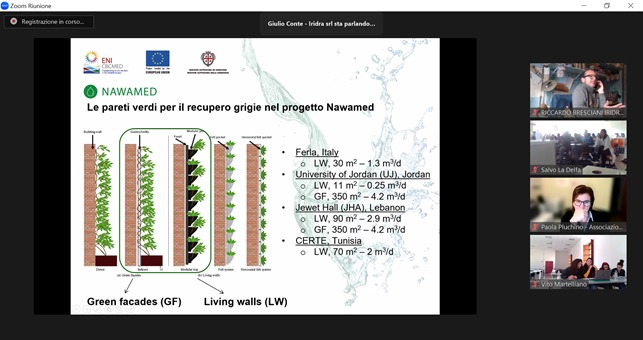
Following this, teacher Salvo La Delfa, already coordinator of several environmental projects at the same institute where he teaches, provided data on the school itself: number of students, water consumption, number of toilets, etc.
In the second part of the meeting, the participants, around 30 students, technicians, professors and university students, were divided into two groups and then replicated a preliminary technical-economic assessment step by step with two different objectives, installing a green wall or a green façade, supported by Giulio Conte himself and his colleague Riccardo Bresciani.
What could have been a simple mathematical exercise of proportions turned into a debate, as each situation has to be estimated based on multiple boundary conditions that were discussed between technicians and students, involving the participants in a real engineering assessment for a pre-feasibility study.
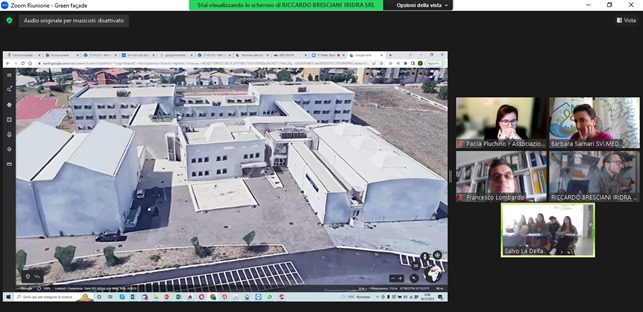
The further additional opportunities of these NBS were also evaluated, such as those related to refreshment, increased biodiversity, aesthetic aspects, as well as the issue of "cost" appeared immediately important to the students. Considerations were therefore made on the difference between the “cost” and “value” of water resources, not only evaluating how costs can decrease while increasing the size of the installation, but also in terms of future scenarios where the impact of climate change will probably lead to a necessary re-evaluation of the current costs of water management in Italy. From “engineers”, therefore, the students became “decision-makers” for a few hours, understanding how costs can sometimes be misleading if not interpreted in a forward-looking and prospective manner.
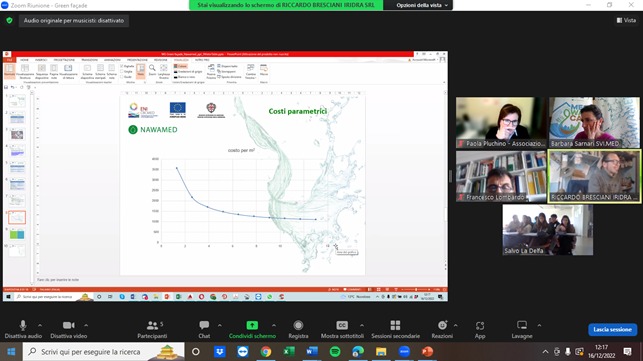
The last water table will focus precisely on the strategies to be implemented especially at urban level by municipalities to project themselves into a future where water scarcity will be an increasingly serious problem. The introduction to the topic was made by Francesco Giunta, representing the network of technical professions of Syracuse, who introduced the current topic of the new Building code of the Sicilian Region (approved in May 2022 and currently being implemented by Sicilian municipalities), announcing the planned work of carefully evaluating the opportunities provided by this planning tool, if combined with a joint consultation on the topic of water management at urban and domestic level. Next appointment in March 2023 to discuss with municipalities and the Sicilian Region how to exploit this opportunity during the 4th and final NAWAMED Water Table.
